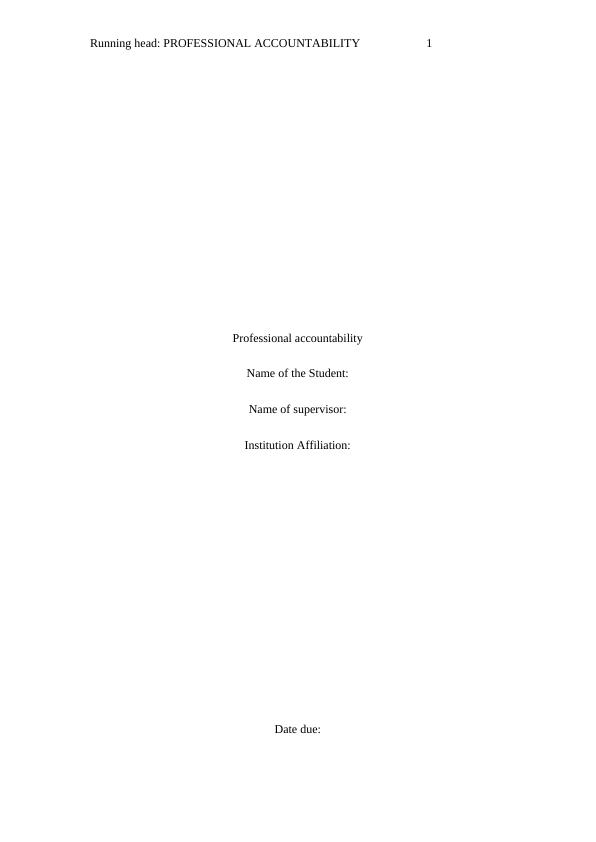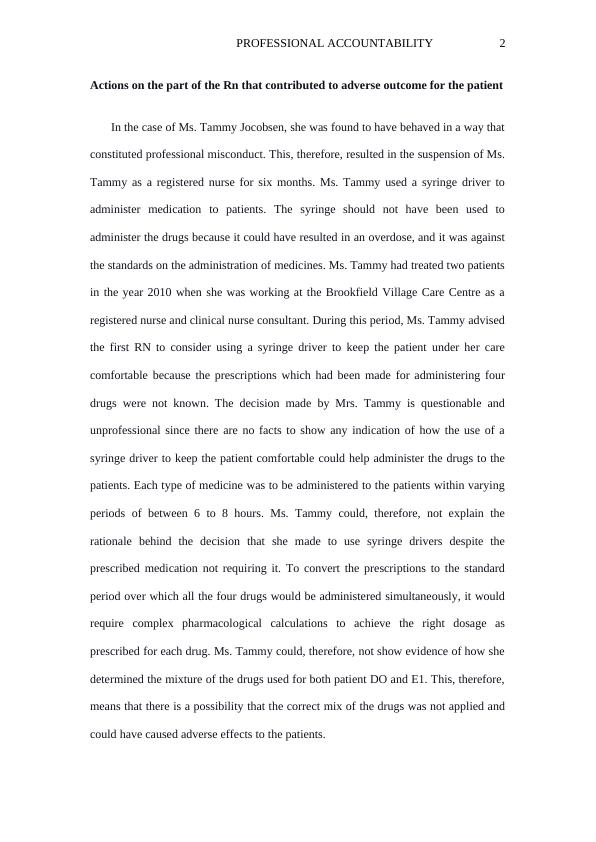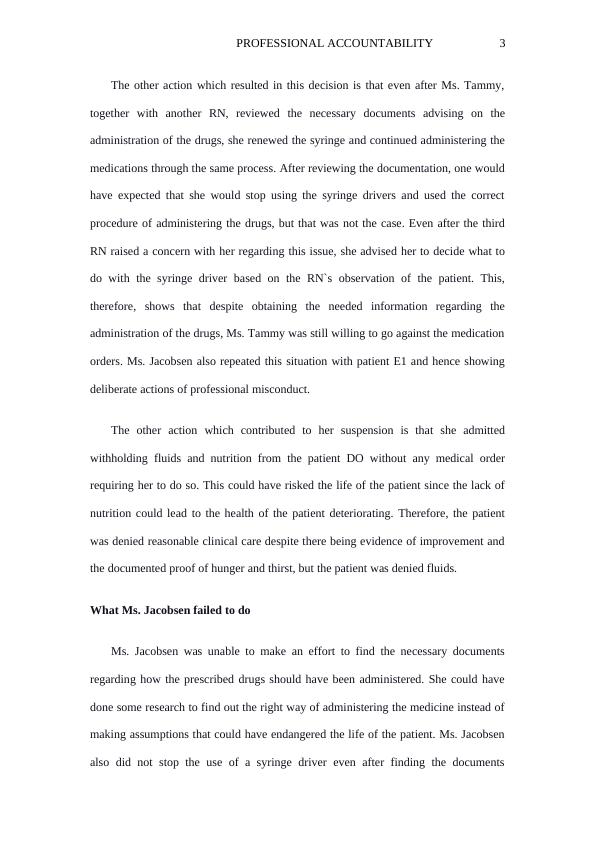Professional Accountability Case Study 2022
Identify a case from the NSW Nurses and Midwives’ Board or AHPRA, HCC or Caselaw website which involved a registered nurse(s) who had their registration cancelled or suspended for greater than 6 months due to their involvement in an adverse event for a patient in their care.
9 Pages2286 Words18 Views
Added on 2022-09-25
Professional Accountability Case Study 2022
Identify a case from the NSW Nurses and Midwives’ Board or AHPRA, HCC or Caselaw website which involved a registered nurse(s) who had their registration cancelled or suspended for greater than 6 months due to their involvement in an adverse event for a patient in their care.
Added on 2022-09-25
ShareRelated Documents
End of preview
Want to access all the pages? Upload your documents or become a member.
Critical Reflection on Medication Error Leading to Patient Death
|7
|1690
|395
Professional Accountability Statement.
|6
|1987
|3
How To Write A Case Study Analysis | Assignment
|7
|2015
|17
Transition to Australian Nursing Practice
|9
|2411
|67
Interpersonal Communication Associated with an Event I was Involved In
|5
|850
|366
Professional Accountability and Patient Safety Case Study 2022
|9
|2493
|25



